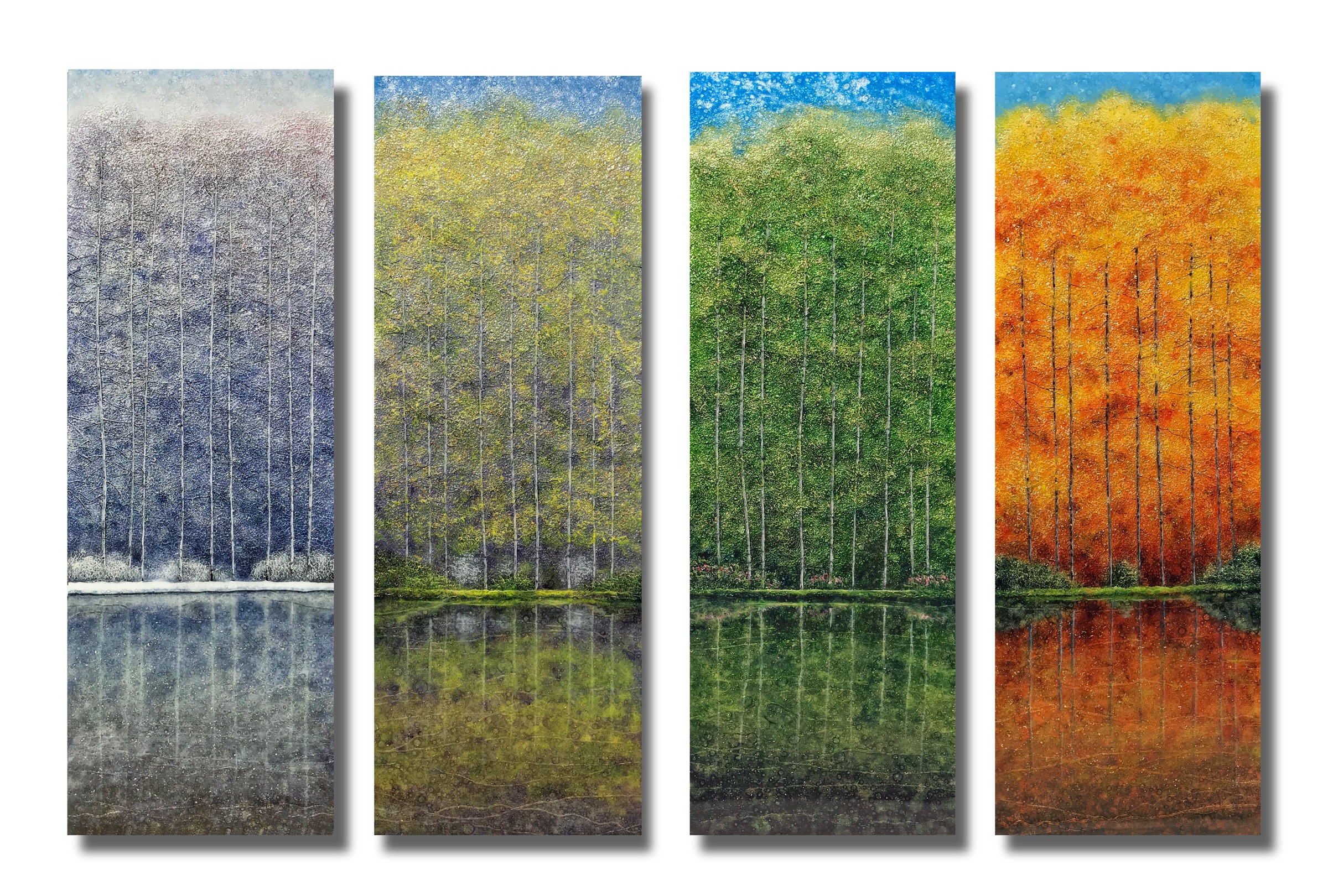As an artist with an open studio, there are lots of questions I get asked from people who are visiting Asheville’s River Arts District. Sometime, I should make a list of the funniest (i.e. strangest!) questions I get asked but that’s for another blog post. :)
There is one question out there that is very rarely asked but is actually a valid question: Why should I purchase artwork? I almost think that if you’re asking that question, you probably shouldn’t be buying artwork. You should just go home to your concrete cube, turn on your single light bulb in the middle of the cube, sit down on your mat and stare at the wall and drink your protein smoothie. What? You have a nice house on a hillside with a nice view? You have a wide screen TV? You have granite countertops in your kitchen? Why? Is that necessary? As far as basic human needs go, we just need shelter (a roof and preferably some walls). Is the rest necessary? As far as basic human needs go, we just need food. Are herbs and spices necessary? Is awesome flavor “necessary”?
Is artwork a good investment? Yes. Absolutely every time.
Why have a nice house? Why have a nice car? Why have anything other than what is absolutely necessary? Simply because those extra things give us joy. Why sprinkle herbs de Provence on your chicken? Those herbs don’t add any nutritional value, so they’re unnecessary, correct? Technically, yes. But we add them because it just really makes the chicken taste awesome, right? Herbs de Provence gives us joy. The nice extras on top of the absolute rock-bottom necessities are added to life because they give us joy.
So, is artwork a good investment? Yes. Absolutely every time. Joy is beyond value. Can’t afford a $100,000 painting by some famous artist? Neither can I. (That’s why I paint my own paintings!) What I’m talking about is not necessarily a huge financial investment in art (unless you have deep pockets and that artwork you would like to purchase gives you joy. If that’s you, please email me at stclaireart@gmail.com or visit my studio at 344 Depot Street, Asheville NC. For the rest of us, what I’m talking about is even small, wise investments into a local artist because he or she is creating things that add joy to this world. When you purchase a painting or glass vase or a ceramic pitcher or piece of hand crafted furniture, you not only invest into something that adds joy to your own life, but you’re investing in another human being, enabling them to continue to create, which gives them joy. Joy goes all around!
So now and then, reach for that nice bottle of wine, sprinkle those herbs on your meat (or veggies) turn on some beautiful music, watch a sunset and sing. Why? Because it’s a necessity? Well actually, yes I think it is.















